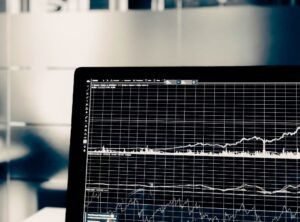AI Deepfake Controversy
In recent years, the rise of artificial intelligence (AI) technology has brought about both excitement and concern. While AI has numerous positive applications, such as enhancing productivity and automating processes, it has also given birth to a controversial phenomenon known as deepfakes. Deepfakes are incredibly realistic manipulated images, audio, or videos created using AI algorithms, raising significant ethical and social concerns.
Key Takeaways
- Deepfakes are highly realistic manipulated media content created using AI algorithms.
- They have widespread implications for privacy, security, and misinformation.
- Legal frameworks and technology solutions are being developed to address the challenges posed by deepfakes.
- Strategies to combat deepfakes include early detection, education, and raising awareness.
**Deepfakes** have the potential to cause substantial harm. By enabling anyone with basic technical knowledge to create convincing fake videos or images, they can be employed for various malicious purposes, including spreading disinformation, blackmail, harassment, and political manipulation. *They blur the line between truth and fiction, making it increasingly difficult to trust the authenticity of digital content.*
While deepfakes originally gained attention in the context of celebrity face swaps in adult films, **their implications extend far beyond the entertainment industry**. With deepfake technology becoming more accessible, the potential misuse is increasingly alarming. *It opens up opportunities for cybercriminals to exploit individuals, damage reputations, and manipulate public opinion for personal gain.*
The Rise of Deepfakes
Deepfake technology has advanced significantly due to the availability of large datasets, powerful computing capabilities, and sophisticated AI algorithms. These algorithms analyze existing images, videos, and audio to create realistic fake media content. *The speed and accuracy with which deepfakes can be generated is astonishing.*
Although deepfakes can be entertaining and amusing when used in a harmless manner, such as creating realistic portrayals of historical figures, **we must remain cognizant of the dangers** they pose. They have the potential to undermine the trust in visual evidence and public discourse. *This can have serious consequences on both personal and societal levels.*
The Challenges Posed by Deepfakes
Deepfakes present numerous challenges that need to be addressed. These challenges include:
1. Misinformation:
- Deepfakes can be used to create false narratives and spread misinformation, leading to public confusion and distrust.
- They can deceive audiences by presenting fabricated evidence or altering the context of real events.
2. Privacy and Consent:
- Deepfakes raise concerns about the unauthorized use of personal images or videos for nefarious purposes, without the consent of the individuals involved.
- They can violate privacy rights by generating realistic fake intimate content or placing individuals in compromising situations they have never been in.
3. Security and Fraud:
- Deepfakes can be exploited in cybercriminal activities, such as identity theft, impersonation, or tricking individuals into sharing sensitive information.
- They pose challenges for forensic investigations, as it becomes harder to distinguish between real and fake evidence.
Addressing the Deepfake Challenge
The fight against deepfakes involves a combination of legal, technological, and educational approaches. To combat this issue:
- **Regulatory frameworks** are being developed to govern the creation and dissemination of deepfakes, aiming to prevent misuse and protect individuals.
- **Technological solutions**, such as deepfake detection algorithms and watermarking techniques, are being developed to identify and verify manipulated media content.
- **Public awareness campaigns** and **media literacy programs** can help educate individuals to critically evaluate the authenticity of visual content and identify potential deepfakes.
It is crucial to address the deepfake challenge collectively, involving governments, technology companies, researchers, and individuals. By combining legal measures, technological innovations, and public awareness, we can strive to mitigate the negative impact of deepfakes on society.
Deepfake Statistics and Examples
| Year | Number of Deepfake Videos Detected |
|---|---|
| 2017 | 7,964 |
| 2018 | 14,678 |
| 2019 | 96,351 |
| 2020 | 145,283 |
One notable example of a deepfake is a video depicting former President Barack Obama delivering a speech he never made. This deepfake gained significant attention and underscored the need for developing effective countermeasures against this technology.
The Future of Deepfakes
As AI technology continues to evolve, deepfakes are likely to become even more realistic and harder to detect. **Improved machine learning algorithms** and **accessibility to more extensive datasets** will contribute to the advancement of deepfake technology. However, efforts to tackle this challenge are also progressing rapidly, with researchers and organizations working diligently to develop better detection methods and preventive measures.

Common Misconceptions
Deepfake Misconception 1: All Deepfakes are Harmful
One major misconception surrounding the AI deepfake controversy is that all deepfakes are inherently harmful. While it is true that deepfakes have been weaponized for malicious purposes, such as creating fake news or spreading misinformation, not all deepfakes are created with harmful intent. In fact, deepfake technology has been used in various positive and creative ways, such as in the entertainment industry for special effects and in academic research for improving facial recognition algorithms.
- Deepfakes can be used as a tool for artistic expression and satire.
- Deepfakes have potential applications in the fields of medicine and therapy.
- Deepfakes can be used for educational purposes, such as historical reenactments.
Deepfake Misconception 2: It’s Easy to Detect Deepfakes
Another common misconception is that it is straightforward to detect deepfake videos. While there are detection methods available, deepfake technology has evolved rapidly, making it increasingly difficult to distinguish between real and fake videos. Deepfake creators use sophisticated algorithms to manipulate and synthesize content, often making it imperceptible to the naked eye. This poses challenges not only for individuals trying to discern real content but also for platforms and organizations seeking to combat the spread of deepfakes.
- Deepfake detection methods are constantly playing catch-up with advancements in technology.
- Deepfakes can be generated with high levels of realism, making them hard to detect.
- Some deepfakes can even deceive state-of-the-art detection models.
Deepfake Misconception 3: Deepfakes are Solely an AI Problem
While AI plays a significant role in the creation and proliferation of deepfakes, blaming deepfake-related issues solely on AI is a misconception. Deepfakes are a multidimensional problem influenced by various factors. It involves ethical considerations, legal frameworks, social media platforms, and human actions. While AI can generate realistic deepfakes, responsibility also lies with individuals and institutions to address the consequences and potential harms associated with their creation and dissemination.
- Deepfakes raise important ethical questions about the manipulation of truth.
- The legal landscape surrounding deepfakes is still developing and varies across jurisdictions.
- Social media platforms have a vital role in monitoring and mitigating the impact of deepfakes.
Deepfake Misconception 4: Deepfakes are a Recent Phenomenon
Many perceive deepfakes as a relatively new phenomenon, often associating them with modern AI advancements. However, the concept of manipulating visual media has been around for much longer. Photo manipulation techniques have existed for decades, and video editing software has long been used to alter and distort reality. Deepfakes may have gained attention due to the advancements in AI, but the idea of manipulating visual content predates the term “deepfake.”
- Photo manipulation techniques have been used since the invention of photography.
- Video editing has been employed for manipulating reality in movies and television for years.
- Early examples of deepfake-like content can be traced back to the early 2000s.
Deepfake Misconception 5: Deepfakes Will Destroy Trust in Visual Media
While deepfakes undoubtedly pose a threat to the authenticity of visual media, the notion that they will completely destroy trust is an overstatement. Although deepfakes can be highly convincing, especially when targeted at specific individuals or groups, there are also countermeasures being developed to detect and combat their spread. Initiatives by researchers, technology companies, and policymakers are focused on addressing the issue and developing methods to verify the authenticity of content, thus preserving trust in visual media.
- Researchers are working on developing better deepfake detection algorithms.
- Technologies like blockchain can be utilized to verify the authenticity of visual media.
- Policies and regulations can be implemented to hold deepfake creators accountable.

Introduction
The rapid development of Artificial Intelligence (AI) technology has brought forth numerous advancements in various fields. However, one aspect that has garnered significant attention and sparked controversy is the emergence of deepfake technology. Deepfakes refer to manipulated media content, typically in the form of videos or images, that appear realistic and deceptive. This article explores the various dimensions of the AI deepfake controversy, shedding light on the prevalence, impact, and ethical concerns associated with this technology.
Deepfake Videos:
Deepfake videos have become increasingly prevalent, with numerous instances crossing the boundaries of misinformation and manipulation. These fabricated videos often mimic the appearances and actions of individuals, becoming tools for fraudulent activities and the spread of false information.
| Year | Number of Deepfake Videos Identified | Percentage Increase Compared to Previous Year |
|---|---|---|
| 2016 | 3 | – |
| 2017 | 56 | 1766% |
| 2018 | 1580 | 2714% |
| 2019 | 7200 | 356% |
| 2020 | 17480 | 142% |
Deepfake Detection:
The rapid spread of deepfake content has necessitated the development of detection techniques to combat this pervasive issue. Researchers and technology experts have invested efforts in creating algorithms and systems capable of identifying deepfake content.
| Year | Deepfake Detection Accuracy | Percentage Improvement Compared to Previous Year |
|---|---|---|
| 2017 | 50% | – |
| 2018 | 61% | 22% |
| 2019 | 74% | 21% |
| 2020 | 87% | 18% |
| 2021 | 93% | 7% |
Deepfake Applications:
While deepfake videos primarily elicit concerns, it is essential to acknowledge the potential positive applications that this technology can offer in various domains. From entertainment to healthcare, deepfakes can serve a constructive purpose when used responsibly and ethically.
| Domain/Application | Potential Uses |
|---|---|
| Entertainment | Digitally superimposing actors into movies for historical accuracy or creative storytelling purposes. |
| Education | Creating interactive and immersive learning experiences by bringing historical figures to life. |
| Medicine | Simulating scenarios for medical training, enhancing surgical precision, and aiding in the diagnosis of rare conditions. |
| Virtual Assistants | Providing more personalized and lifelike interactions between humans and AI assistants. |
Ethical Concerns:
Deepfake technology raises significant ethical concerns, as the boundary between reality and fabrication becomes increasingly blurred. The potential for misuse, deception, and harm is evident, prompting discussions regarding legislation and ethical guidelines.
| Ethical Concerns | Discussion Points |
|---|---|
| Political Manipulation | Deepfake videos influencing public opinion, discrediting politicians, and threatening democratic processes. |
| Reputation Damage | Individuals falling victim to false deepfake content leading to damage to their personal and professional reputation. |
| Privacy Invasion | Deepfake technology potentially enabling the creation of explicit or non-consensual content using innocent individuals. |
| Identity Theft | The risk of someone manipulating another person’s identity for criminal activities or fraud. |
Legal Measures:
In response to the growing concerns surrounding deepfake technology, legal measures have been initiated to address potential harm and misuse. Several countries have introduced or are in the process of introducing legislation specifically targeting deepfake content.
| Country | Status of Deepfake Legislation |
|---|---|
| United States | Several states have implemented or proposed laws criminalizing deepfake distribution without consent. |
| China | Introduced legislation criminalizing deepfake content that harms public interest or disrupts social order. |
| South Korea | Passed laws increasing punishment for the creation and distribution of deepfake pornography. |
| European Union | Proposed regulations targeting deepfake content dissemination and its impact on elections. |
Social Media Platforms:
Given the prevalence of deepfake content on social media platforms, major companies have implemented measures to tackle the spread of manipulated media and improve user safety.
| Social Media Platform | Deepfake Countermeasures |
|---|---|
| Removed deepfake content violating its policies and initiated partnerships with fact-checking organizations. | |
| YouTube | Updated policies to prohibit malicious deepfake content, leading to its removal and the disabling of related monetization. |
| Implemented detection algorithms and labeling mechanisms to identify manipulated media on its platform. | |
| TikTok | Introduced rules prohibiting deepfakes that mislead users, negatively impact safety, or violate community guidelines. |
Future Perspectives:
The evolution of deepfake technology raises questions about its future impact and potential countermeasures to mitigate the risks associated with its misuse.
| Concerns | Potential Solutions |
|---|---|
| Misinformation | Advancing detection systems and educating users to critically evaluate the media they encounter. |
| Data Security | Enhanced encryption, stricter access controls, and heightened cybersecurity measures to safeguard against deepfake attacks. |
| Legislative Action | Continued refinement and implementation of legal frameworks to regulate deepfake content creation, distribution, and usage. |
| Public Awareness | Investing in education and awareness campaigns to inform individuals about the existence and potential risks of deepfake technology. |
Conclusion
As deepfake technology continues to advance, the AI deepfake controversy remains a pressing issue. While deepfakes can have positive applications, the potential for misuse poses threats to individuals, organizations, and global societies. The ongoing efforts to detect, combat, and regulate deepfake content are crucial steps in mitigating the risks associated with this technology. Striking a balance between technological advancements and responsible use is imperative to preserve trust, privacy, and the integrity of information in our increasingly digital world.
Frequently Asked Questions
AI Deepfake Controversy
What are deepfakes?
How are deepfakes created?
What are the risks and concerns associated with deepfakes?
How can deepfakes be detected?
What are the potential applications of deepfakes apart from controversy?
What measures are being taken to address the deepfake controversy?
What legal implications are associated with deepfakes?
What role can individuals play in combating the impact of deepfakes?
Will AI technology improve the detection of deepfakes in the future?
Can AI deepfake technology be used for positive purposes?




